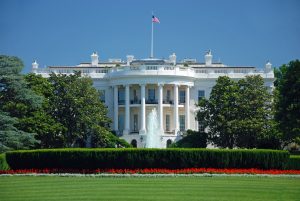 The past several decades have muddied what once was a clear relationship between policyholders and their insurers. For pre-1987 occurrence-based policies in particular, policyholders face an increasingly familiar scenario: one day, they learn they are no longer dealing with the insurer that sold them insurance. A stranger has crept into the relationship.
The past several decades have muddied what once was a clear relationship between policyholders and their insurers. For pre-1987 occurrence-based policies in particular, policyholders face an increasingly familiar scenario: one day, they learn they are no longer dealing with the insurer that sold them insurance. A stranger has crept into the relationship.
Articles Posted in CGL
Faulty Workmanship May Still Be Covered in Pennsylvania
 If you were to look for a quick answer regarding whether a commercial general liability (CGL) policy covers damage resulting from faulty workmanship under Pennsylvania law, you’d likely come out believing the answer is “no.” Many article headlines, purported state surveys, and news reports come to that conclusion based on the general finding that faulty workmanship causing damages only to the work itself is not an “occurrence” under the standard CGL insurance policy definition. But this analysis misses a critical nuance in the case law and the important distinction between damage to the negligent contractor’s work and damage to “other property.”
If you were to look for a quick answer regarding whether a commercial general liability (CGL) policy covers damage resulting from faulty workmanship under Pennsylvania law, you’d likely come out believing the answer is “no.” Many article headlines, purported state surveys, and news reports come to that conclusion based on the general finding that faulty workmanship causing damages only to the work itself is not an “occurrence” under the standard CGL insurance policy definition. But this analysis misses a critical nuance in the case law and the important distinction between damage to the negligent contractor’s work and damage to “other property.”
EPA Announces Increased Efforts to Require Cleanup of Coal Ash – Insurance Should Be a Component of Companies’ Response
 Early in 2021, we wrote about potential insurance implications that could arise from the then-new Biden Administration’s expected regulatory priorities. Among other things, we noted that heightened scrutiny on coal ash was expected. On January 11, 2022, the U.S. Environmental Protection Agency (EPA) confirmed that prediction, issuing a press release announcing “key steps” it is taking to “protect groundwater from coal ash contamination.” As companies with coal ash liabilities consider EPA’s new guidance and next steps, they should be aware that they may have insurance that could cover some of their coal ash cleanup costs.
Early in 2021, we wrote about potential insurance implications that could arise from the then-new Biden Administration’s expected regulatory priorities. Among other things, we noted that heightened scrutiny on coal ash was expected. On January 11, 2022, the U.S. Environmental Protection Agency (EPA) confirmed that prediction, issuing a press release announcing “key steps” it is taking to “protect groundwater from coal ash contamination.” As companies with coal ash liabilities consider EPA’s new guidance and next steps, they should be aware that they may have insurance that could cover some of their coal ash cleanup costs.
Your CGL Policy May Provide Coverage for a Data Breach
 As cybercrimes and data breaches continue to cause significant damage to companies of all types, policyholders are looking to their various insurance policies for coverage to help weather the storm and recoup losses. A recent decision by the U.S. Court of Appeals for the Fifth Circuit highlights the need for companies to review all of their policies for potential cyber-related coverage, including their CGL policies.
As cybercrimes and data breaches continue to cause significant damage to companies of all types, policyholders are looking to their various insurance policies for coverage to help weather the storm and recoup losses. A recent decision by the U.S. Court of Appeals for the Fifth Circuit highlights the need for companies to review all of their policies for potential cyber-related coverage, including their CGL policies.
Follow the Leader: How Ambiguities in Excess Follow-Form Policies Can Lead Policyholders Down a Crooked Path
 A feature of most corporate liability insurance programs is the tower system of coverage: a primary policy with several overlying excess policies stacked atop one another collectively providing coverage up to a desired (or available) limit of liability. Depending on the size and liability exposures of a policyholder, a tower can consist of dozens of policies providing limits totaling hundreds of millions of dollars. Adding to this complexity, excess policies often share layers of coverage in quota share arrangements, sometimes subscribing to the same policy but more often issuing separate policies for a stated percentage of the quota share whole. To avoid as much as possible an impenetrable web of conflicting coverage terms, excess policies often “follow form” to the underlying coverage (usually to the primary policy) providing the insurer certainty and providing the policyholder a consistent tower of coverage. It is not always possible, though, to obtain clarity and certainty in tower placements. Insurance companies issuing excess coverage may not wish to agree to all the terms included in the underlying policies, and so may offer additional or differing terms, creating inconsistencies in an otherwise monolithic tower. For example, a primary insurer may refuse to cover punitive damages whereas an excess insurer may agree to do so, or vice versa.
A feature of most corporate liability insurance programs is the tower system of coverage: a primary policy with several overlying excess policies stacked atop one another collectively providing coverage up to a desired (or available) limit of liability. Depending on the size and liability exposures of a policyholder, a tower can consist of dozens of policies providing limits totaling hundreds of millions of dollars. Adding to this complexity, excess policies often share layers of coverage in quota share arrangements, sometimes subscribing to the same policy but more often issuing separate policies for a stated percentage of the quota share whole. To avoid as much as possible an impenetrable web of conflicting coverage terms, excess policies often “follow form” to the underlying coverage (usually to the primary policy) providing the insurer certainty and providing the policyholder a consistent tower of coverage. It is not always possible, though, to obtain clarity and certainty in tower placements. Insurance companies issuing excess coverage may not wish to agree to all the terms included in the underlying policies, and so may offer additional or differing terms, creating inconsistencies in an otherwise monolithic tower. For example, a primary insurer may refuse to cover punitive damages whereas an excess insurer may agree to do so, or vice versa.
Reopening Workplaces: Employer Insurance Coverage for Sexual Harassment Claims Against Employees
 For both good and ill, the COVID-19 pandemic has altered every facet of personal and professional life. For example, many employees have enjoyed unprecedented freedom to work remotely. However, with vaccines becoming more readily available, the time is soon approaching when people will return to their offices and places of work. With this return comes the potential for workplace-related disputes and, in their aftermath, claims for insurance coverage for the actions of employees, such as sexual harassment.
For both good and ill, the COVID-19 pandemic has altered every facet of personal and professional life. For example, many employees have enjoyed unprecedented freedom to work remotely. However, with vaccines becoming more readily available, the time is soon approaching when people will return to their offices and places of work. With this return comes the potential for workplace-related disputes and, in their aftermath, claims for insurance coverage for the actions of employees, such as sexual harassment.
Is Your Insurance Program Ready for the Biden Administration?
 The Biden administration has hit the ground running with executive orders, regulatory and legislative priorities, and cabinet-level and other top posts being announced on a daily basis. Our public policy colleagues have been closely tracking many of the policy priorities of the new administration and highlighting important regulatory and legislative developments that businesses can expect coming down the pipeline.
The Biden administration has hit the ground running with executive orders, regulatory and legislative priorities, and cabinet-level and other top posts being announced on a daily basis. Our public policy colleagues have been closely tracking many of the policy priorities of the new administration and highlighting important regulatory and legislative developments that businesses can expect coming down the pipeline.
Policyholders Caught in a Reservation of Rights Catch-22 May Still Be Able to Get Out of the Bind
 As coverage counsel, we witness firsthand the precarious positions policyholders are often left in due to the actions (or inactions) of their insurance carriers. A prime example of such a catch-22 scenario is when an insurer refuses to consent to a settlement offer while defending under a reservation of rights.
As coverage counsel, we witness firsthand the precarious positions policyholders are often left in due to the actions (or inactions) of their insurance carriers. A prime example of such a catch-22 scenario is when an insurer refuses to consent to a settlement offer while defending under a reservation of rights.
Insurance Coverage for Forced Labor Liability
 Times of crisis can bring out the best in people. Unfortunately, times like this can also be an opportunity for exploitation of inexpensive, and potentially forced, labor. As America reopens its economy, it is likely that we will begin to see a surge in many industries. The resulting demand for labor, coupled with unprecedented unemployment and related desperation not only in America, but worldwide, could lead unscrupulous individuals and companies to exploit American and foreign workers. We saw this with previous disasters, such as Hurricane Katrina, where foreign laborers were exploited in the rebuilding process with false promises of citizenship. Now, to be clear, exploitation occurs even during times of economic prosperity; however, it can be even more pronounced and egregious when people must deal with uncertainties and hardships never before experienced in their lifetimes.
Times of crisis can bring out the best in people. Unfortunately, times like this can also be an opportunity for exploitation of inexpensive, and potentially forced, labor. As America reopens its economy, it is likely that we will begin to see a surge in many industries. The resulting demand for labor, coupled with unprecedented unemployment and related desperation not only in America, but worldwide, could lead unscrupulous individuals and companies to exploit American and foreign workers. We saw this with previous disasters, such as Hurricane Katrina, where foreign laborers were exploited in the rebuilding process with false promises of citizenship. Now, to be clear, exploitation occurs even during times of economic prosperity; however, it can be even more pronounced and egregious when people must deal with uncertainties and hardships never before experienced in their lifetimes.
Do Putative Class Members’ Claims Trigger the Duty to Defend?
 Must an insurer consider the possibility that putative class members (i.e., potential class members not named in the complaint) other than the proposed class representatives (i.e., the plaintiffs named in the complaint to represent the proposed class) have claims within the proscribed policy period in determining whether its duty to defend has been triggered? Many insurers answer “no,” arguing putative class members’ claims—many of which would otherwise be barred by the applicable statute of limitations—are too speculative to trigger coverage. But courts across the country have disagreed, repeatedly answering the question in the affirmative. Last year, the Northern District of Indiana was the latest court to decide this issue in favor of policyholders.
Must an insurer consider the possibility that putative class members (i.e., potential class members not named in the complaint) other than the proposed class representatives (i.e., the plaintiffs named in the complaint to represent the proposed class) have claims within the proscribed policy period in determining whether its duty to defend has been triggered? Many insurers answer “no,” arguing putative class members’ claims—many of which would otherwise be barred by the applicable statute of limitations—are too speculative to trigger coverage. But courts across the country have disagreed, repeatedly answering the question in the affirmative. Last year, the Northern District of Indiana was the latest court to decide this issue in favor of policyholders.
 Policyholder Pulse
Policyholder Pulse


